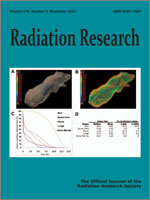Protection against radiation-induced DNA strand breaks is an important aspect in the design and development of a radioprotector. In this study, the radioprotective efficacy of sesamol, a natural antioxidant, was investigated in aqueous solution of plasmid DNA (pBR322) and compared with that of melatonin, a known antioxidant-based radioprotector. Thermal denaturation studies on irradiated calf thymus DNA were also carried out with sesamol and melatonin. Sesamol demonstrated greater radioprotective efficacy in both plasmid DNA and calf thymus DNA. To assess the radical scavenging capacity of sesamol and melatonin, 2-deoxyribose degradation, DPPH and ABTS assays were performed. Sesamol exhibited more scavenging capacity compared to melatonin. In vitro studies with V79 cells showed that sesamol is 20 times more potent than melatonin. It is proposed that the greater radioprotective efficacy of sesamol could be due to its greater capacity for scavenging of free radicals compared to melatonin. The results will be helpful in understanding the mechanisms and development of sesamol as a radioprotector.
How to translate text using browser tools
7 September 2011
Sesamol as a Potential Radioprotective Agent: In Vitro Studies
K. Mishra,
P. S. Srivastava,
N. K. Chaudhury
ACCESS THE FULL ARTICLE

Radiation Research
Vol. 176 • No. 5
November 2011
Vol. 176 • No. 5
November 2011




